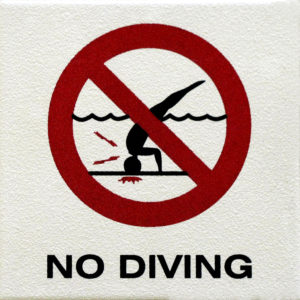
One such element is liability. You must present evidence to prove who caused the injury or death. Depending on the circumstances, one or more of the following parties may be liable for damages after a swimming pool accident:
- The engineer or landscape architect who designed the pool;
- The company that manufactured the pool’s components;
- The contractor who installed the pool or one of its components;
- The property owner or occupier;
- The municipality responsible for maintaining the pool; or
- The employer of the individual whose negligence was the proximate or actual cause of the injury or death.
In some cases, several parties share liability. For example, if the accident occurred because one of the pool’s components was incorrectly installed, you may have grounds for a claim against both the individual who installed the component and his or her employer.
It’s important that you identify all potentially liable parties since this might increase your chances of recovering compensation for 100 percent of your damages. Under California’s joint and several liability law, one defendant can be ordered to pay 100 percent of a personal injury victim’s economic damages even if that defendant was only partially liable. This law helps accident victims recover compensation if one of the defendants doesn’t have the insurance coverage to pay for their share of the damages.
Determining liability in these cases can be complicated and typically requires a thorough investigation. As such, it’s wise to discuss your case with a swimming pool accident lawyer as soon as possible—while time-sensitive evidence of negligence and liability is still available.
Common Causes of Swimming Pool Accidents
In order to identify the liable parties, your lawyer will have to determine what caused the accident. Below are a few common examples of factors that contribute to injuries and deaths at swimming pools:
Inadequate Warning Signs: When a swimming pool lacks adequate signage stating its various depths and diving restrictions, the property owner or occupier could be liable for injuries that result. The owner may also be responsible if someone gets hurt due to insufficient supervision.
Poor Security: Swimming pools are considered attractive nuisances. As such, those who have one on their property are usually required to install adequate fencing around it, as well as a gate that locks. Otherwise, young children could be drawn to the pool and end up suffering an injury. If this happens, the property owner or occupier could be liable for the resulting damages.
Improper Maintenance: Pools that are not chlorinated or filtrated properly can cause infection and other illnesses. If a private pool is not maintained, the property owner may be liable in the event that someone who uses the pool gets sick. If a public pool is not maintained, the municipality could be liable or any resulting illnesses.
Faulty Equipment: When defective equipment causes serious injury—perhaps the diving board snaps, for example, or the railing breaks loose—there are a number of parties who could be liable. These include the designer, manufacturer, distributor, and installer of the equipment. Unlike other kinds of swimming pool accident claims, those that involve defective products can be filed on the grounds of strict liability. That means a finding of fault is not necessary to impose liability.
How Long Do I Have to File a Premises Liability Lawsuit Following a Swimming Pool Accident?
In the state of California, the typical statute of limitations for personal injury lawsuits is two years. That means you have two years from the date on which you were hurt at the pool to bring your case to court if a settlement is not reached.
This two-year deadline also applies to wrongful death claims. As such, if your loved one died in a swimming pool accident, your family most likely has two years from the date of death to file a lawsuit against the liable parties.
If a government entity was liable for the accident, however, you will have to take action much sooner. An administrative claim must be filed with the appropriate agency within just six months of the incident (in some cases, this deadline is extended to one year). The government then has 45 days to respond. If your claim is denied, the lawsuit must be filed within six months of the date when the rejection letter was mailed or personally delivered to you; however, if you do not receive a rejection letter, you have two years from the date on which the accident occurred to file suit.
When it comes to swimming pool accidents, the victims are often young children. In this scenario, the statute of limitations does not start running until the injured party turns 18. In other words, if your son or daughter gets hurt at a pool, your family may have until his or her 20th birthday to take the case to court. Because there are so many exceptions to the statute of limitations, it’s wise to consult an attorney as soon as possible so you don’t miss the lawsuit filing deadline.
Call (562) 206-1939 to Discuss Your Case with a Long Beach Premises Liability Attorney
Your Injuries Are Personal to Me
If you or a loved one was hurt at a swimming pool, contact the Law Office of Michael D. Waks to determine how best to proceed. We combine the resources of a large practice with the personalized legal services of a small, local law firm.
You will have a direct line of contact to Michael through every stage of the proceedings, and he will be available to answer your questions after office hours and on weekends if necessary. Call (562) 206-1939 or use our Online Contact Form to set up a free case evaluation with a premises liability lawyer in Long Beach.